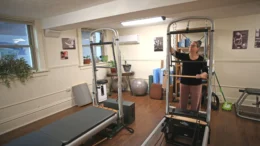For longtime gardeners, saving seeds from their plants may be a family tradition. For new gardeners, it may only be a matter of time until they wonder if they can save the seeds forming in their vegetables and flowers to grow next year’s garden. While the answer is yes, the successful seed saver will need to plan ahead. Here are a few things to consider in getting started with seed saving.
Heirloom vs. Hybrid
It is best to save seeds only from heirloom plants to avoid disappointment. Heirloom plants have been open pollinated over time, and fruit from the seeds you save should have most of the characteristics of the parent. Just be sure to save seeds from typical fruits; for example, if your tomato variety should be round, dark red, and the size of a baseball, do not save seeds from fruits that are pale, elongated, or undersized. Hybrid plants are grown from seeds of two pure parent lines. These parent plants are not similar and are combined to create desirable traits, such as disease resistance, increased vigor, and uniformity. The result of these crosses usually only lasts one generation, so the seeds harvested from hybrids may produce disappointing results.
What About Crossbreeding?
Have you heard the term “franken fruit”? Many people assume that vegetables in their garden will crossbreed with almost anything, but only plants of the same species can crossbreed. To discover which plants are the same species, check the botanical name. For example, a cucumber (Cucumis sativus) will not crossbreed with a melon (Cucumis melo), even though the large male and female blossoms on the plants may appear similar. However, broccoli, Brussels sprouts, collards, European kale, and mustard greens may all crossbreed, which is indicated by the botanical name they share: Brassica oleracea.
Getting Started
The vegetables recommended for beginning seed savers are beans, peas, tomatoes, and lettuce. That is because these vegetables are self-pollinating, reducing the chance of undesirable crossbreeding. However, there is still a chance that they may be insect pollinated with another plant of the same species in your garden. Therefore, it is best to only plant one heirloom variety of each plant if you are planning to save the seeds.
Saving Flower Seeds
Though most seed-saving activity is focused on vegetables, you can also save seeds from flowers. You may notice that some flowers readily seed themselves. In order to control where those seeds are replanted or to share with others, check for seeds about two to three weeks after the plants have bloomed. Flowers that lend themselves well to seed saving include calendula, columbine, foxglove, globe amaranth, marigolds, morning glories, nasturtiums, nigella, and zinnias. Sunflowers are another popular choice for seed saving; the petals should dieback, and the head should dry for a few days while on the stalk—it may need to be covered with a paper bag to keep birds from consuming the seeds. The flower head can then be cut off to dry in the bag in a warm, dry space.
Harvest and Winnowing
Vegetables that are ripe enough to eat are not always mature enough for seed saving. Likewise, different vegetables require different methods in order to separate the seed from the plant. Let’s look at the examples of vegetables for beginning seeds savers mentioned above.
Beans and Peas – Ideally, these pods should be allowed to mature and dry on the plant. Pods are then easily broken open to remove the seeds.
Lettuce – If you harvest all of your lettuce when it is time to eat it, you may never see a seed! But eventually, lettuce will send up flower stalks that contain seeds. The individual composite flowers of lettuce are similar to dandelion flowers. So, harvest lettuce seeds before they are dispersed by the wind. You should then pick apart the seed heads or rub them between your hands to separate the seeds from the pappuses, or tufts, that would allow them to blow in the wind. A screen or sieve is helpful to separate the chaff from the seeds.
Tomatoes – Tomato seeds should be harvested when the fruit is ripe enough to eat. Tomato seeds must be fermented to separate them from the gelatinous pulp that surrounds them. To do so, cut the tomatoes and squeeze the seeds and pulp into a jar. Let the jar sit for two to three days, agitating it occasionally. The viable seeds will sink to the bottom of the jar. Decant these seeds by pouring out floating seeds and liquid from the top of the jar. Fill with fresh water and repeat. Then, pour the viable seeds from the bottom of the jar onto a cheesecloth or a fine sieve to dry.
Drying and Storing
Seeds should be dried to the point where they could be snapped by hand or shattered with a hammer. Another test for proper dryness is to make sure that you cannot dent the seed with your fingernail. Gardeners spread seeds on various materials to dry them, including newspapers, coffee filters, paper plates, and screens. Storage preferences vary, too. As long as seeds are kept in cool, dry, dark place, they can be stored in plastic or glassine bags, plastic containers, or glass jars. Some seed savers have good luck with storing seeds in the refrigerator; others feel that this environment could contain too much moisture, causing the seeds to mold. You might want to experiment to find the storage location that works best for you. No matter how they are stored, seed containers should be labeled with details about the plant variety and date. Many seeds are viable for only a few years, which makes the date of harvest very important.
If you are ready to give seed saving a try, I highly recommend the Seed Savers Exchange website for detailed and easy-to-follow information on growing and harvesting seeds from a vast variety of edible and ornamental garden crops.
This educational blog is a series of informative articles from the Penn State Master Gardeners volunteers plus news concerning the group and their activities. For more information, click here.































